“When our homes feel good, we feel good.” For professional organizer and chaos counselor Tinka Markham Piper and interior designer and DIY expert Maca Atencio, home environment is key to well-being. Factors like clutter (or lack of), design, plants and even lighting can have a big impact on our mood and overall wellness – especially as we all are spending more time at home. With this in mind, the Montreal-based duo (you can check out Tinka’s whimsical space here or step into Maca’s eco-conscious home here) is sharing their tips for setting up your living space to support your best life. From creating multi-functional spaces to organizing kids’ areas in playful (and practical) ways to making work-from-home days a little brighter, Maca and Tinka’s tips just may unlock a happier home. Bonus: check out the video for this calm yet functional space.

A Supportive Home Base
What is the relationship between home, mood and mental health? For Tinka (who is the owner of Solve My Space, a home organization and redesign business) and Maca (who is the creative entrepreneur behind HeyMaca), it’s all about the connection between our emotional lives and physical spaces. By enhancing your home environment – via factors like design, scents, cleanliness and even plants – you can support better energy, outlook and mood.
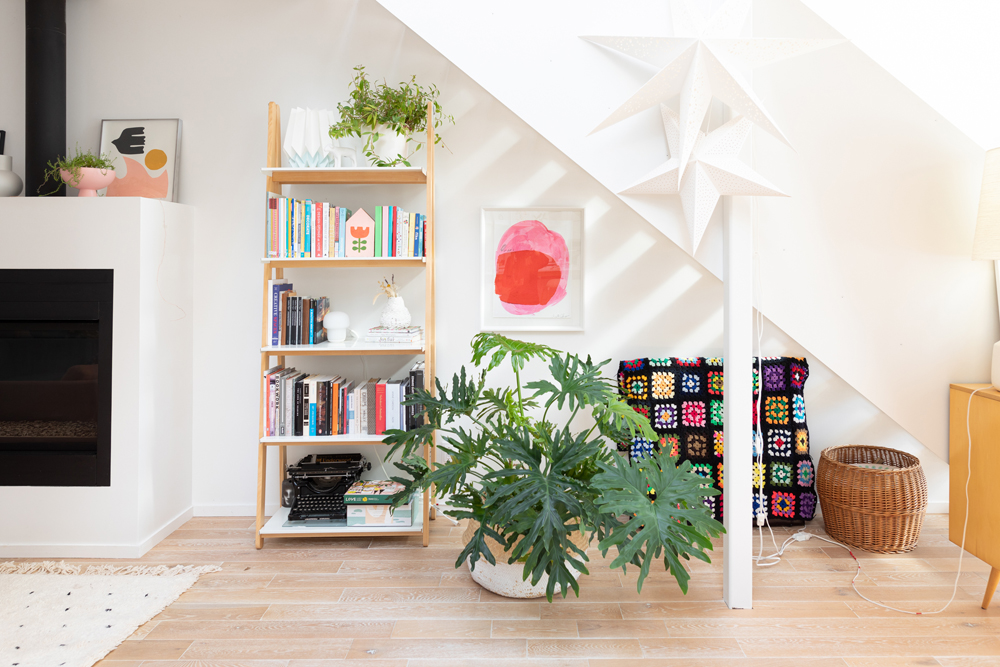
Colour Theory
When it comes to home design, colour can be an effective tool to lighten and brighten up – in more ways than one. “We both embrace colour everywhere we go,” they say. “From our closets, our living rooms, our office spaces – pretty much everywhere around us. Colour has a magical impact on the way we live our day-to-day life. For example, using cold colours like blues and pinks in a room can help us relax, concentrate and reduce stress, and using greens in different shades in our offices can help us focus better and be more productive.”
Related: Tips for Choosing the Right Interior Paint Colours for Your Home

Office Space
Many of us have adapted to working from home recently, but that doesn’t necessarily mean that we’ve adapted our home space to bring joy and personality to our productive spaces. In a home office, there are additional elements to consider in your organization and design. Do you have good lighting for work? Are your necessary supplies easily accessible? From a practical perspective, choosing pieces that are stylish and functional (like this perpetual wall calendar designed by Maca) can help you stay organized while also adding style to your home. Feeling crafty? Try making Maca’s DIY cork board organizer for your office wall.
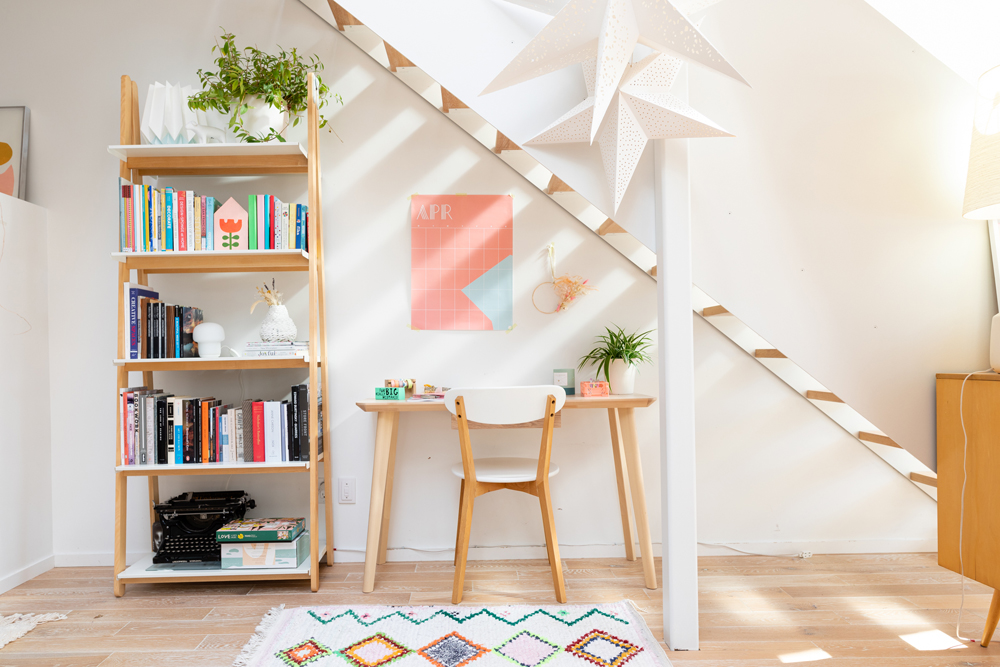
Productive Personality
While Tinka and Maca advise thinking about factors like lighting (especially natural light), placement of workspace, energy flow and plants, they also suggest taking the time to personalize your home workspace with special, personal pieces that bring joy. “I use a lot of art prints (all colourful and positive), little details like cute washi tapes and stationary items, weekly fresh blooms that I get at the farmer’s market, candles and palo santo that I love, and recently, hanging string lights that bring me so much happiness. It’s the little things that help us boost our moods, I promise!”
Related: 15 Items Every Home Office Needs to Boost Productivity This Year
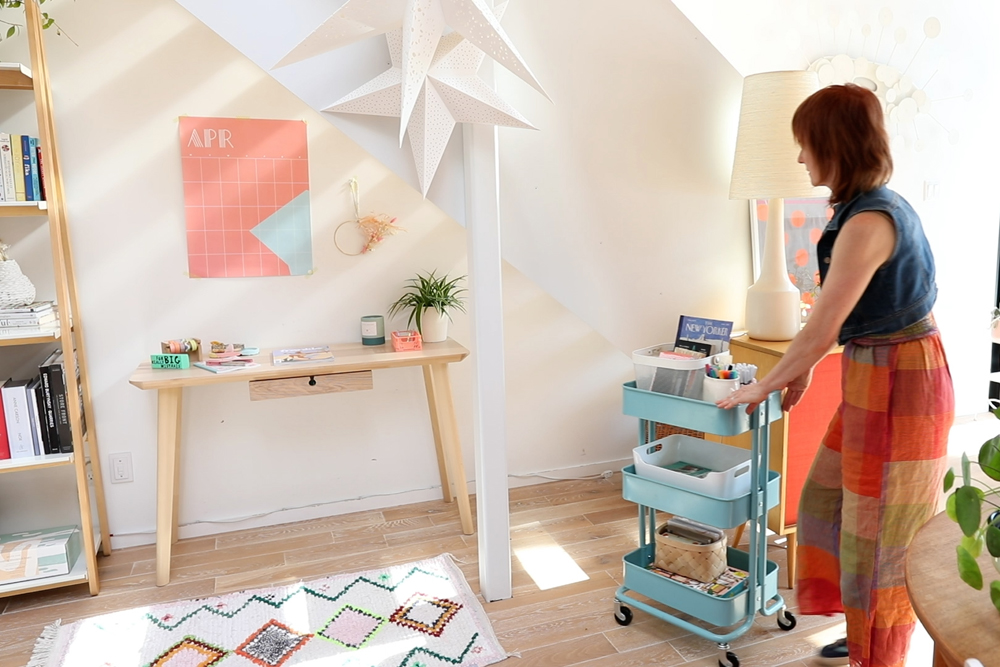
Keep it Moving
It can be challenging to keep everything in a set space when you have a busy, active home. Tinka and Maca’s solution? Add in modular, movable storage solutions like this tiered cart. “These hardworking carts can be used in workspaces, kitchens, bedrooms, entryways and more,” Tinka and Maca explain. “They help to create ‘mini-systems,’ especially when space is at a minimum.”
Related: 20 Cheerful Kitchen Accessories That Are Instant Mood Boosters
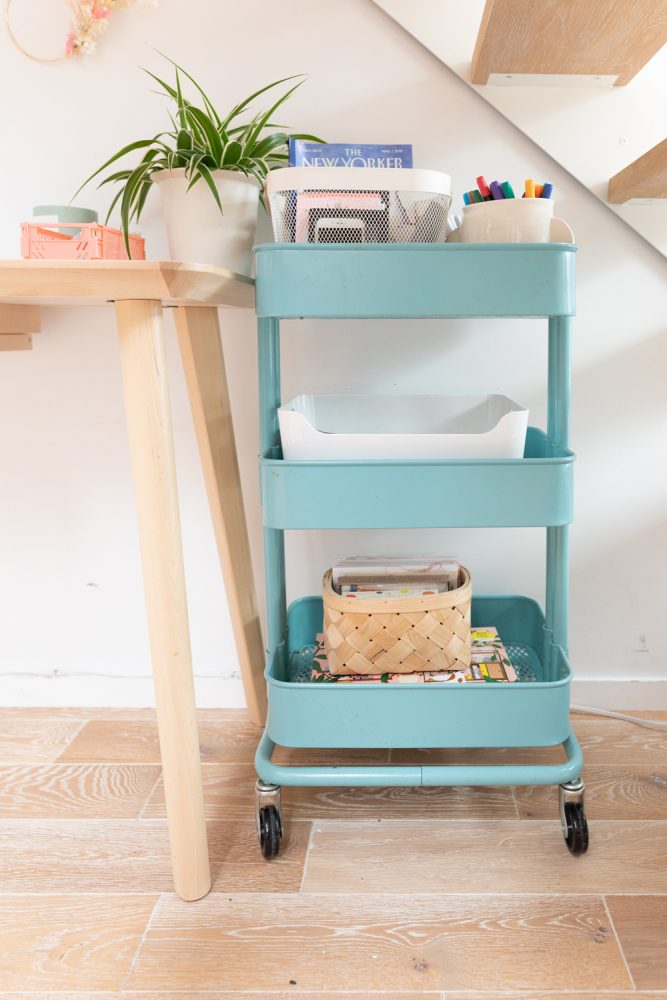
Top-Tier Organization
Just having a movable storage cart to store items is one step, but you can take it to the next level – and make it easier to move through your day – by also adding an organization system to the piece. “If you have a cart in a workspace, you can assign each tier a category,” Tinka and Maca explain. “For example, the top tier could be your inbox, the second tier could hold office supplies and the third tier could be electronics (or whatever category you need).”

Make Spaces Multi-Use Spaces
Of course, for many of us the dining room table has become a de facto home office… and homework station, and crafting room, and place to eat (if there’s space). There’s nothing wrong with multi-functional spaces – they can actually be a wonderful way to make the most of your home. However, as Maca and Tinka explain, some planning and organization can make multi-use spaces more functional and less stressful.

Start With a Plan
“The first step is always an inventory,” the duo explains. “Make a list of all the activities that actually happen in your multi-use space at home. Assess what you currently have in the space – are the items actually supporting the activities? Remove or relocate the items that aren’t serving a purpose to support the range of activities.”
Related: 10 Decorating Mistakes That Are Making Your Home Look Cluttered
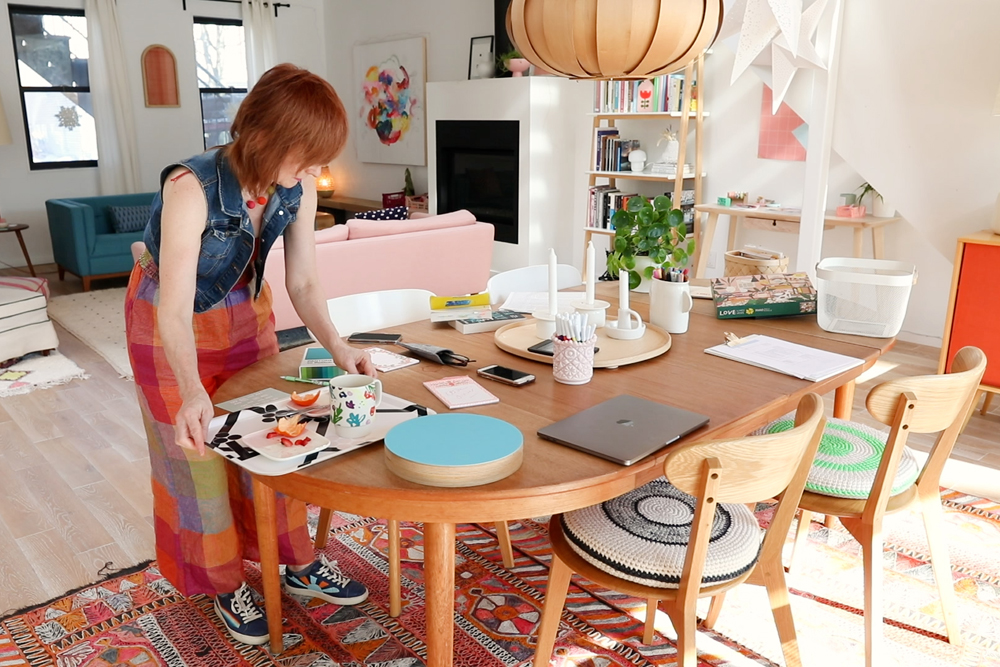
Support Systems
Next, they suggest creating systems that can support those activities. “For example, if you are doing homework or work at the table, have a basket for each person to add their items to when you need to clear things off. And designate an area where these baskets live,” Tinka explains. “For example, in this dining room, we added a small shelf to contain items that can be easily accessed when needed.”
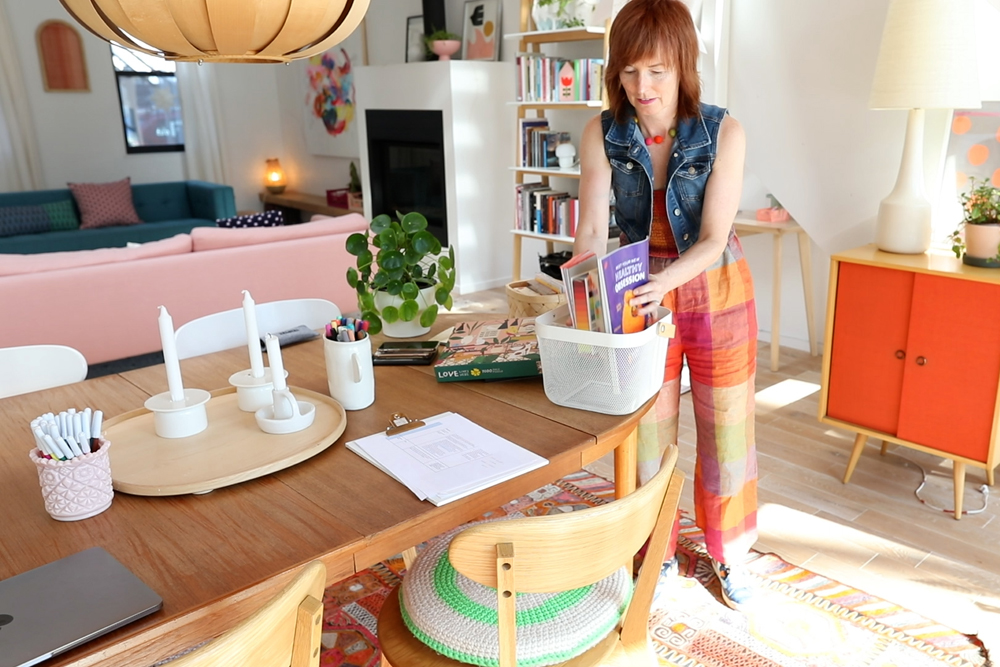
Maintenance Zone
The final step to multi-functional space bliss is all about maintenance. By getting in the habit of doing quick, regular sweeps and tidy-ups after an activity is complete, you can help ensure your systems run smoothly, and the spaces don’t become overwhelming. “If it becomes a regular practice, just like washing dishes, to clear these hard-working spaces, they will be that much easier to maintain,” they explain.
Related: From Appliances to Fabrics: How Often Should You Clean These Things in Your Home?
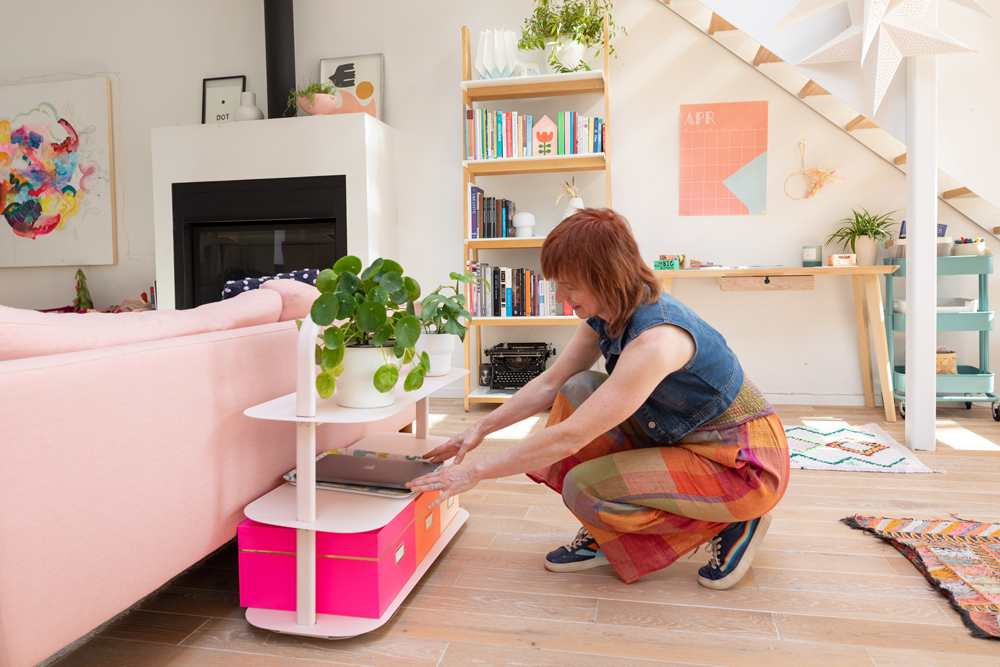
Double Up
In the same way that using a room for multiple activities can make the most of your space, creating multitasking storage areas can help you stay organized and make things easier to find. Take this sleek stand behind Tinka’s dreamy pink sofa: “The pink stand behind the couch is actually a shoe stand for an entryway, but we used it instead as a small console shelf behind the couch,” she says. “That way, it’s close to the dining table so it can be cleared off easily. It’s a good height for kids to access their items if necessary, and it can fit multiple baskets, bins or boxes together. It becomes a ‘storage command centre’ for the dining table when you need to transition to other activities.”
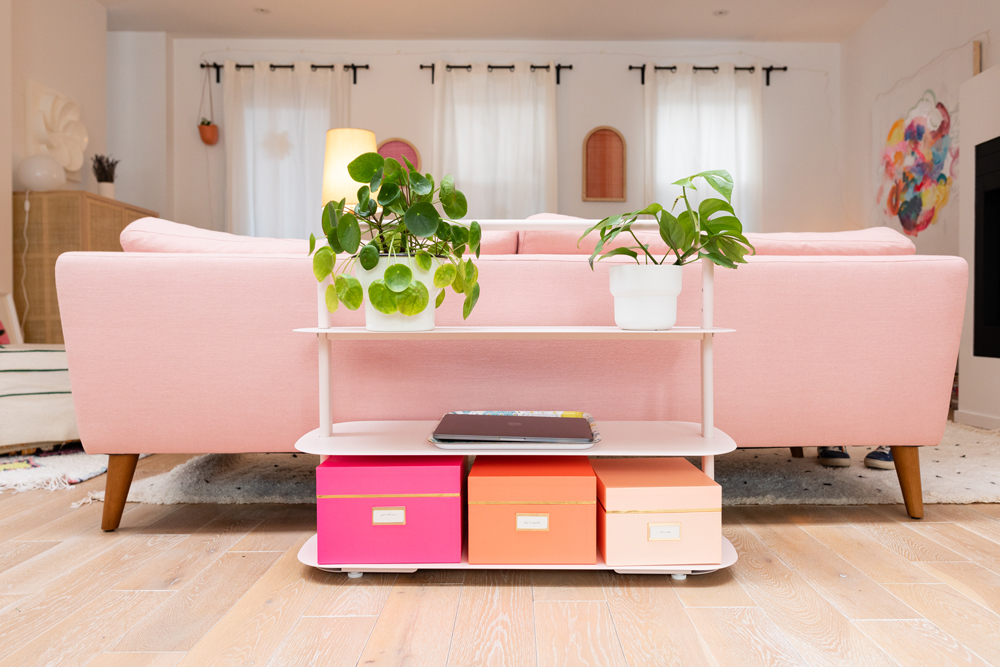
Green Thinking
The storage stand also doubles as a place to display a touch of nature indoors – another tool that Tinka and Maca use to make the home more supportive for well-being. “Bring the outdoors inside with plants, trees and flowers,” they explain. “The reason we use plants as a strategy for mental wellness is that natural elements are known to increase alertness, activity, concentration and energy. At the same time, plants can also help to reduce stress and make you feel more relaxed – similar to feelings we can have when we’re in nature.”
Related: 15 Plants That’ll Help With Stress, Anxiety and Depression
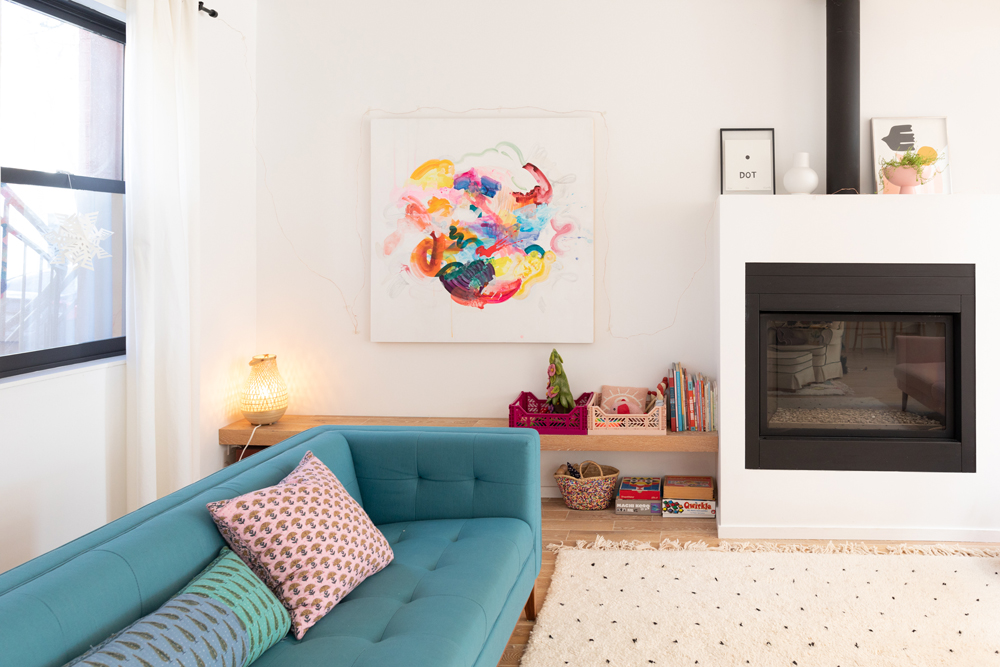
Room for Living
The living room is the space where we do a lot of our, well, living – so it’s key to create an area that is comfortable, relaxing and entertaining for everyone. “The goal for this area was to carve out a space in the living room to make it easy for kids to access toys and books, and also easy for things to be put away,” they say of this space.
Related: From Modern to Minimalist: Top Living Room Design Ideas

Shelf Situation
The low built-in shelf in the living room truly serves multiple purposes. “This area has a multipurpose function as it is a bench to sit on, a floating shelf to play at (for kids!) and an area for storage,” they add. “Since it’s in a visible area in the living room, we also wanted it to be visually appealing by using colourful bins.”
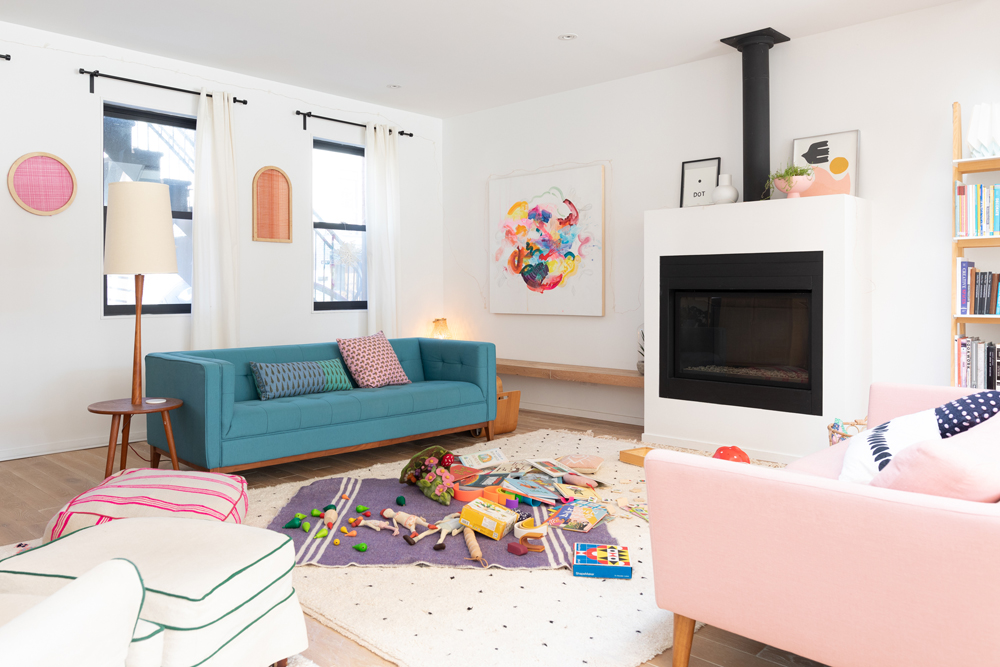
Toy Time
Keeping kids’ toys and items organized – while also encouraging their comfort and creativity at home – can be a real challenge. Instead of playing catch-up and always trying to stash kids’ items, Maca and Tinka suggest that a system can be powerful. Step one? Assess the situation.
Related: Looking for Ways to Help Spark Creativity at Home? Design a Fun DIY Kids’ Craft Room
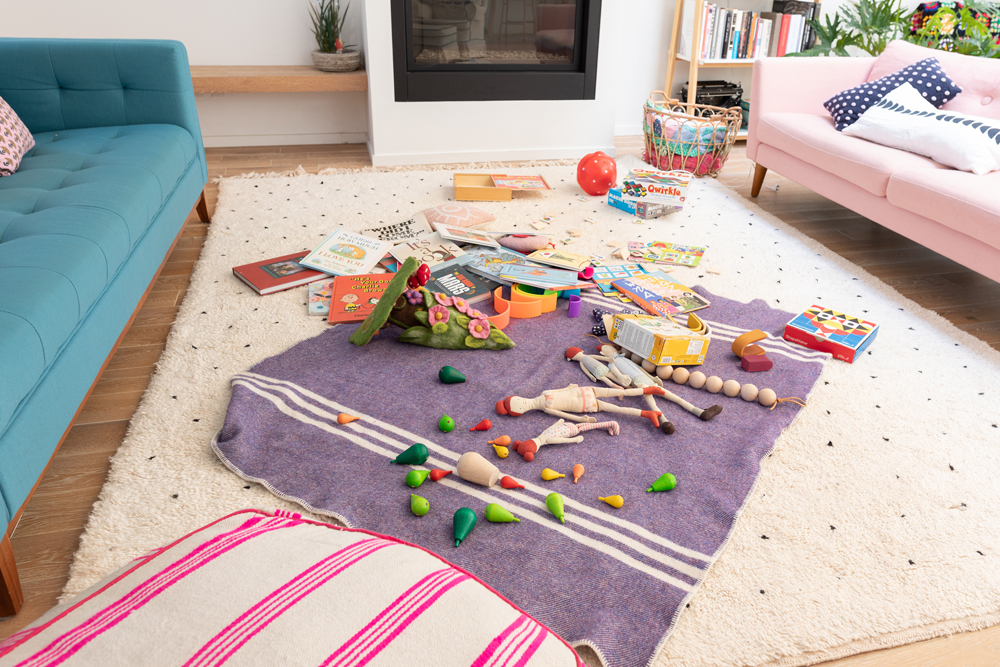
Volume Matters
“The first step is always assessing the volume of items you want to store,” they explain. “Figure out exactly what items need storage before you figure out placement and containers. It’s always good to ask your kids what they currently like to play with so you are keeping their favourite items most accessible.”
Related: Easy Ways to Organize Your Kids’ Rooms – That We’ve Actually Tried
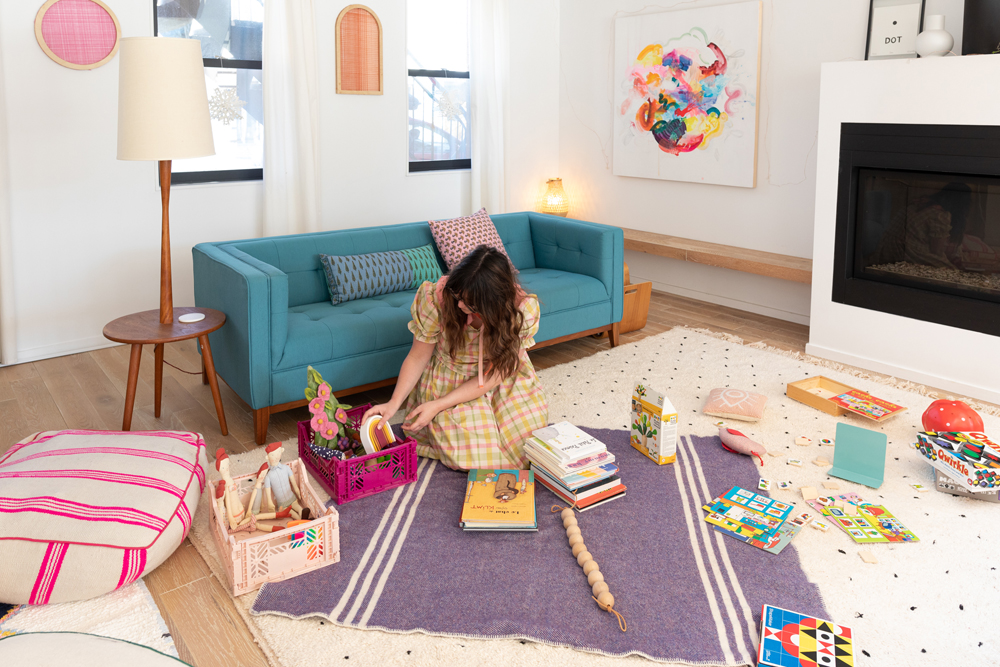
Play With Different Storage Solutions
Once you know what you’re dealing with, you can choose the best storage solution for each type of item. “Bins are helpful for corralling items, baskets are good for stuffed animals and dress-up items, closed bins can be useful for legos and you can organize books by colours,” they suggest.
Related: 15 Smart Back-to-School Finds for an Organized Homeschool Classroom

Kids Can Help
Another tip for keeping kids’ items organized in order to help promote harmony in the home? Label your storage containers, and get the kids involved in the organizing process. “If kids are too young to make their own labels (either by drawing or writing), you can add a photo of the category to the storage for easy identification,” they suggest.
Related: Decorating With Kids: 15 Ways to Make it a Family Affair
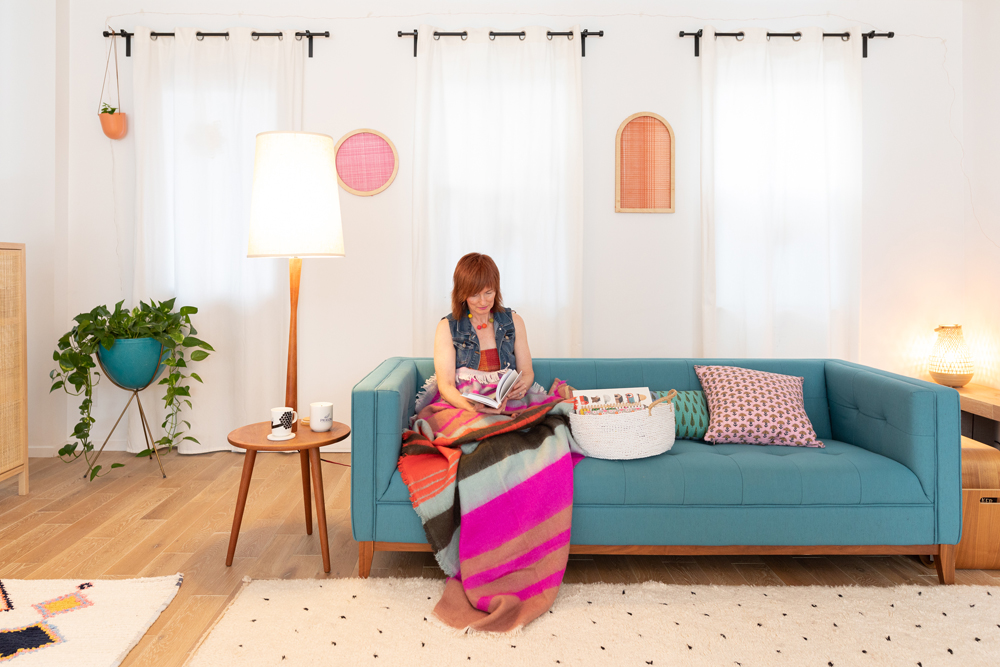
Mini Homes
is conducive with creating calm in your home, but there are always plenty of items that we want to have on hand. When it comes to commonly used items, something as simple as a basket can be a stylish, simple way to keep things together. As Maca and Tinka explain, “Baskets are a go-to for collecting items in an attractive and easy way. I like to call them ‘mini homes’ because they can be so useful for grouping like objects together. Also, they are transportable so you can move them around easily. And they can be so pretty!”

Self-Care Station
Here, Tinka keeps a variety of wellness-themed items – like a candle, a book, puzzle, journal and cards – together in a chic basket so she can enjoy self-care moments whenever they’re needed (without creating surface clutter in the living space).
Related: Our Favourite Storage Solutions to Stash Your Stuff Around the House
HGTV your inbox.
By clicking "SIGN UP” you agree to receive emails from HGTV and accept Corus' Terms of Use and Corus' Privacy Policy.




